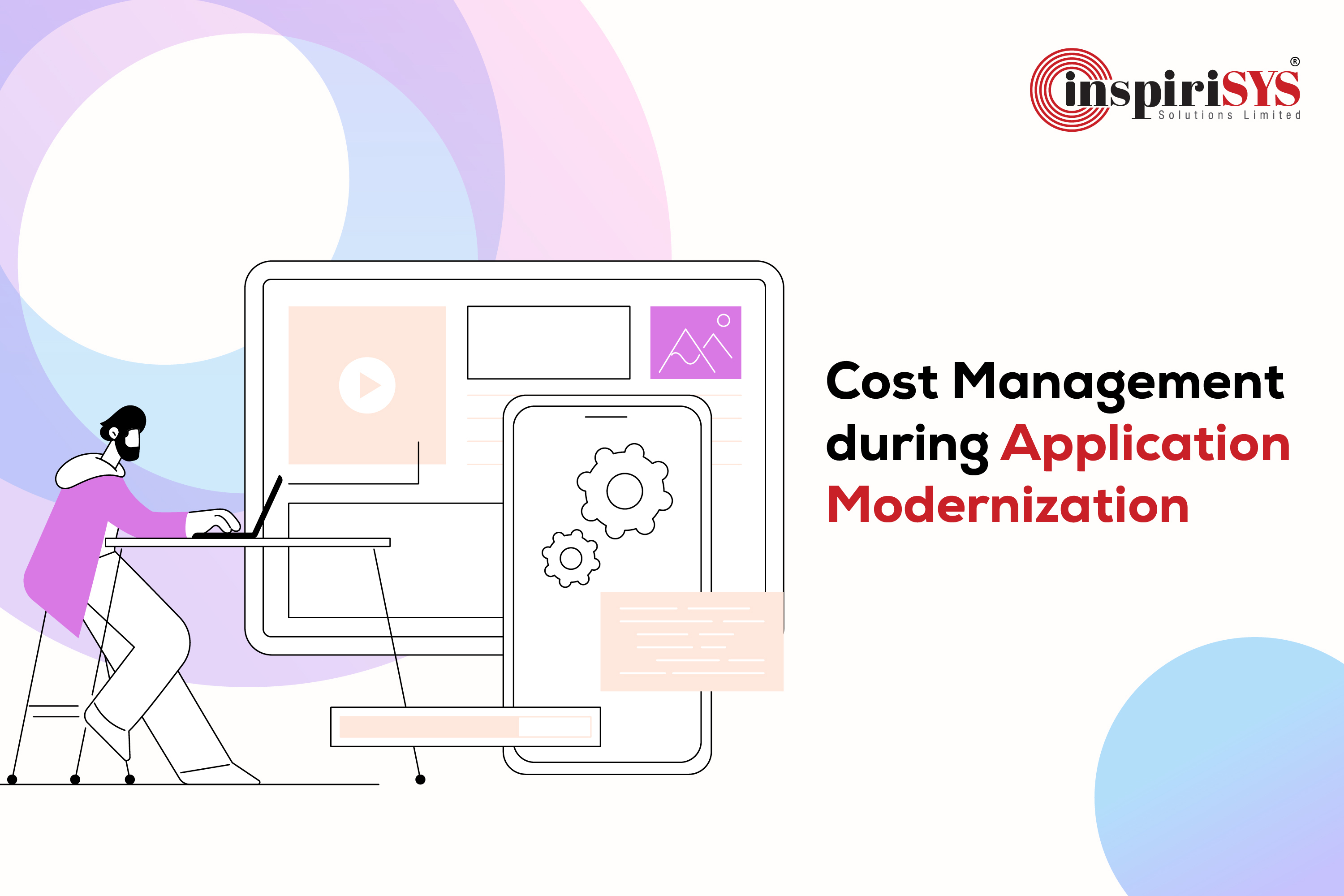Application modernization has become an unavoidable part of the smart digital transformation that is happening in all organizations around the planet. Businesses are forced to upgrade their legacy applications as they become more prone to the negative effects of outdated software.
Considering the above-mentioned situation, it is important for all organizations to deal with the legacy modernization phase, which comes with obvious challenges such as cost optimization and risk reduction. In this article, we will help you understand how you can reduce costs and risks with the best practices that have been proven to be successful.
The Three Ways to Modernising Software and Application
Before we get into the costs and risks involved in a modernization process, we want you to know how modernization is done. Once you decide to modernize your legacy application, you must pick one approach from the options below.
1. Rewrite
First, you can use a recent and reliable programming language to rewrite the code of the application. This method commonly gives underestimated costs and time frames, so analyze your project carefully before choosing to rewrite the code.
2. Replace
In this method, you have to replace the whole system with a newly-built application. However, certain components and features from the old application will be required in a different form for the application which has to serve the expected purposes. The complexity level can become high when replacing the app until you settle on the final version.
3. Reuse
The final option is to reuse the existing legacy application and update it for better functionality. This approach will involve step-by-step progress, with testing being done after each phase.
What are the Risks in Modernization?
Modernizing your legacy applications can bring a number of risks when you use any of the three methods discussed earlier. Listed below are some of the common risks in modernization.
1. Risks of legacy elements affecting the new architecture
Modernization is required for legacy systems to become more efficient and scalable. It is important to note that all legacy software contains problematic elements that need to be identified and addressed well ahead. By skipping this important practice, organizations and teams will face the risk of performance bottlenecks in the revamped application.
To avoid this risk, always analyze the code of the existing legacy app and find places where improvements are needed and address them promptly.
2. Security concerns
When a legacy application is modernized, there are expected changes happening to the existing systems. This will bring security problems and it is a key area to concentrate on for successful project completion. Microservices architecture is becoming a widely used style of building apps. If you choose to implement this software architecture, make sure you take care of the API security features. Also, keep in mind that your legacy components must be in line with the cloud environment.
1. Migration and Data Loss
A recent cloud security report has said that around 60% of organizations are concerned about data leakage when data is migrated to the cloud. The application modernization process will require you to redesign and re-architect the existing system, breaking it down into smaller components. This makes the data more vulnerable to data breaches, as well as other possibilities, such as human errors, machine errors, and security breaches. Therefore, always plan your cloud migrations with clarity to avoid or minimize data loss.
2. Release errors
During application modernization, there is a risk of release errors that can negatively affect the performance, stability, and security of the application. These can include configuration errors, integration errors, compatibility errors, and security vulnerabilities. It is essential to thoroughly test the application before releasing it to production. This should include testing the application in the new environment, testing all integrations and compatibility with other components, and conducting thorough security testing.
Factors affecting application modernization costs
Management of costs can become easier when you know what factors contribute to the budget of a project. Generally, application modernization costs between $50,000 and $150,000. However, the cost may increase depending on the scale of the project. Here are some factors that determine the cost of any application modernization project:
1. Legacy System Complexity: The complexity of the existing legacy system can have a significant impact on the cost of modernization. The more complex the system, the more time and effort it may take to modernize it.
2. Size of the Application: The size of the application being modernized can also affect the cost. Large applications with extensive functionality may require more resources to modernize.
3. Technology and Infrastructure Changes: Modernizing an application often involves upgrading or replacing outdated technologies and infrastructure. The cost of these changes can vary depending on the extent of the upgrades required.
4. Customization and Integration: Customizations made to the legacy system and the need for integration with other systems can also impact the cost of modernization.
5. Skillset and Experience of the Development Team: The skillset and experience of the development team can also have an impact on the cost. A team with experience in modernizing legacy applications may be able to complete the project faster and more efficiently than an inexperienced team.
6. Testing and validation: Modernizing an application requires extensive testing and validation to ensure that the new system functions correctly. The cost of testing and validation can vary depending on the complexity of the system and the extent of the changes made.
7. Regulatory compliance: Compliance with regulatory requirements can also affect the cost of modernization. Applications in heavily regulated industries may require additional compliance measures, which can increase the cost of modernization.
Ways to Manage Costs and Reduce Risks During Application Modernization?
We have seven practices that will help you or any organization manage costs and reduce risks during application modernization, while still achieving their desired outcomes.
1. Develop a comprehensive plan: Before starting the modernization process, it's important to develop a comprehensive plan that outlines the scope of the project, the goals, the timeline, and the budget. This plan should be reviewed and approved by all stakeholders to ensure that everyone is aligned and aware of the project's objectives and constraints.
2. Conduct a thorough assessment: Conducting a thorough assessment of the legacy application can help identify potential risks and challenges, as well as opportunities for cost savings. This assessment should include a review of the application's architecture, code, data, and infrastructure.
3. Prioritize modernization efforts: It's important to prioritize modernization efforts based on business needs and values. This can help ensure that resources are focused on the most important aspects of the application and that the project stays on track.
4. Use agile methodologies: Using agile methodologies can help reduce risk and manage costs during application modernization. Agile development allows for incremental updates and testing, which can help identify and mitigate issues early on in the process.
5. Leverage automation: Leveraging automation tools can help reduce manual effort and speed up the modernization process. Automation can be used for tasks such as code conversion, testing, and deployment.
6. Consider cloud migration: Moving the application to the cloud can help reduce infrastructure costs and improve scalability. However, it's important to carefully evaluate the costs and benefits of cloud migration before making the move.
7. Engage a trusted partner: Engaging a trusted partner with expertise in application modernization can help reduce risk and ensure that the project stays on track. A partner can provide guidance on best practices and help navigate potential challenges.
Conclusion
The trend of modernizing applications and software is the need of the hour with all branches of technology evolving at a very rapid pace. However, everything comes down to money and businesses have to be smart when making decisions so that they end up on the profitable side. The practices and approaches mentioned in this post may be basic, but they are sufficient to reduce costs and avoid common risks. If you are deciding to enlist a partner for modernizing your application, make sure they adhere to the necessary practices and be clear when communicating your requirements to them.







